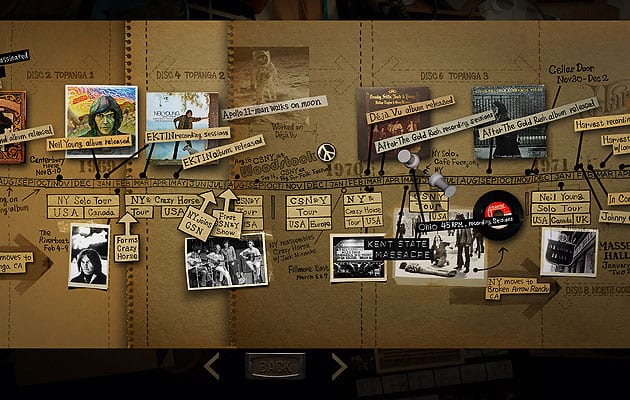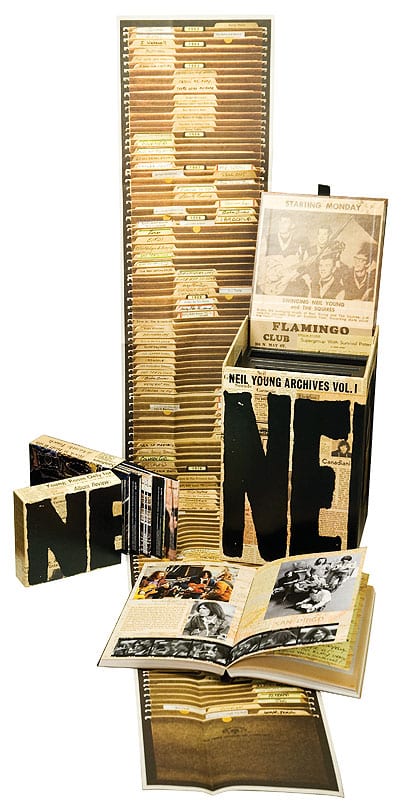|
image: Reprise Records |
||
|
Just as music was evaporating into MP3s, a new era of monster box sets has revived the expensive artifact, says Tania Ketenjian The way we have listened to music in the past 30 years has transformed. In the 70s, we would sit back, relax and watch a vinyl plate mesmerically spin on a central axis. Then the cassette came on the scene offering two wheels that would coil tape. In 1984, a “revolutionary” product was presented, the CD, in which we could see our own reflection. In the twilight of the 20th century, the way we listened disappeared into sound files, mp3s. Glossy pictures and printed lyrics suddenly became obsolete. We could get music for free and major bands even began offering their music for whatever we felt it was worth. We gained a sense of empowerment and we lost the artifact. Now it seems, we have come full circle. Today, vinyl is selling at increasing rates. For the younger generation raised on digital music, the need for an object has become all the more potent. The success of Facebook and other social networking sites shows our addiction to relationships and an artifact offers just that, a relationship, a connection, an understanding. Most recently, this has come in the form of designer box sets, some selling for thousands of dollars. Last year, Nine Inch Nails came out with a limited edition box set that cost $300 and sold out within a day. In April, Prince released his own box set, which included a custom made iPod with music and movies, just for you. That was priced at a whopping $2100 and those that were willing to pay the price now have what must feel like a personal gift from Prince. Now, Neil Young’s long-awaited box set Archives Vol 1: 1963-1972 is upon us, released at the pretty price of $350. Like Prince and Reznor, Young has bucked against the prevailing trend of music purchasing. His box set is pricey and tangible. But Young has actually revolutionised the box set, merging the old forms of the artifact with the promise of new technology. His set is made up of ten Blu-ray discs which, holding 50 gigabytes of information each, seamlessly unite the digital with the objet d’art, bringing in the best of both worlds. Pop in a Blu-ray disc and you’re in a room filled with Young’s artifacts: postcards, pictures, coffee-stained notebooks, typewritten lyrics, movies, television appearances, newspaper clippings, letters, reviews, interviews. None of these are concrete, of course, but they’re tremendously palpable and therefore feel just like tactile artifacts. Because of Blu-ray, you can browse through everything while listening to the music, becoming the voyeur in Young’s attic of memories. You feel engaged with the work and intimately connected to Young. I have always appreciated Neil Young, respecting his work while not being a big fan. While reviewing Archives, three hours passed without me realising it. There was so much to see, so much to read, and here, in my own room, I had been invited, unabashedly, into his life. There’s a beautiful moment when Young is leaning out of an old car on his property in the hills of California, where I grew up, and he says: “No matter how many people are around me, I keep talking about all the things that go on inside me.” The joy and vulnerability on his face against the bright blue sky suddenly made me see him as a dreamer, as someone who followed the only thing he could do, followed it fully and preserved all the evidence of that journey. Now, through Archives, he has shared that with us, and in that moment, just with me. And I feel honored to experience it.
With the Archives you’re a voyeur, rooting through Young’s attic (image: Reprise Records) Neil Young: Archives Vol 1 is published by Reprise Records www.neilyoungarchives.com |
Words Tania Ketenjian |
|
|
||




















